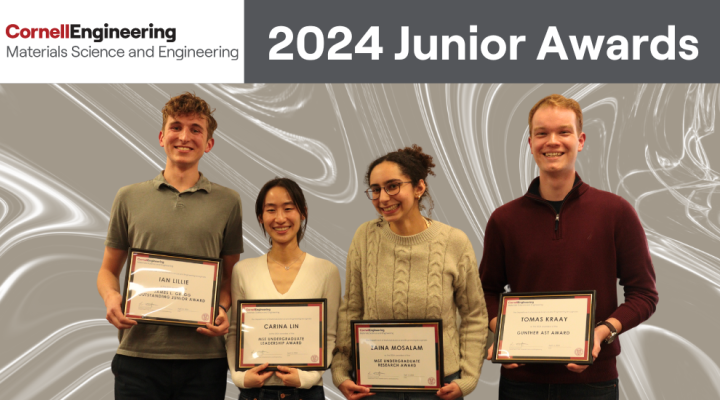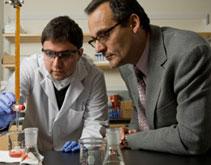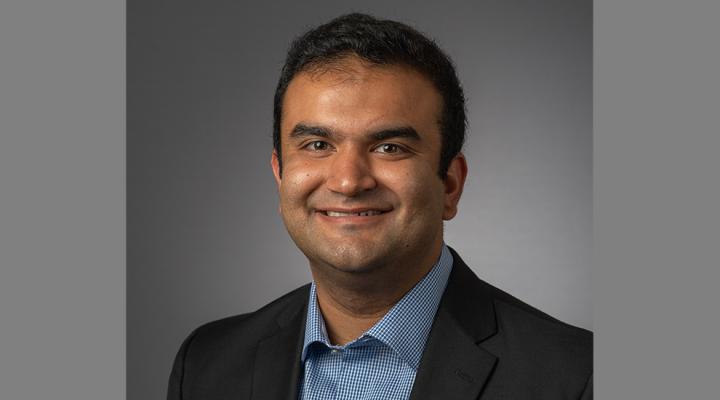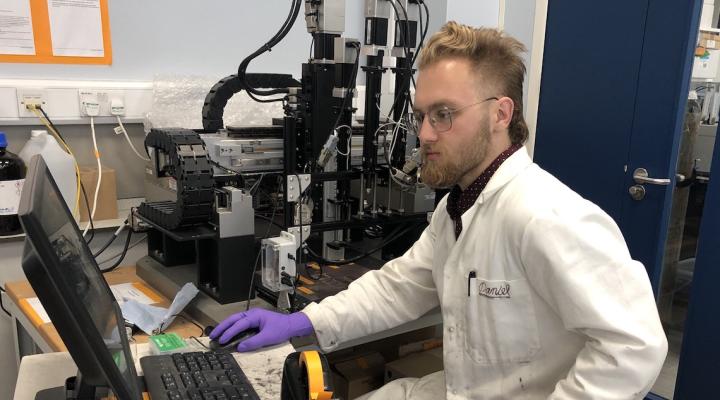Robert Rodriguez seems to thrive on change.
After spending six years at Cornell earning his Ph.D., and contributing to pioneering research on Nanoscale Ionic Materials (NIMs), Rodriguez is about to start working in lithography as a process engineer for Intel's RAMP division in Portland, Ore. "I'm always interested in new challenges to keep me going," says the 29-year-old from Riverside, Calif. "They are working on the next generation of chips that are going to be manufactured. You scale it up and sort out all the bugs so that high volume manufacturing goes smoothly."
Rodriguez' hunger for change helped bring him to Cornell after he received his undergraduate degree from the University of California at Riverside. At Cornell, he joined the lab of materials science professor and KAUST-CU co-director Emmanual Giannelis. "Cornell's a great school and that's the ultimate reason why I came here, but it was nice to be in a different location—a change of pace," says Rodriguez. "My undergrad work was really fundamental research, then for graduate school I started out in physics, but switched fields to materials science after working for Emmanuel for three years. The reason for that is I really wanted to do something more applied."
Besides a good vibe, Gianellis had some very interesting research, says Rodriguez. "The one thing that really got me was, here are a new set of materials that no one had ever worked with and I was going to have the first opportunity to really play with them and understand them," he says. "I didn't realize it was going to be that much chemistry, but I've learned a lot."
Since he was an undergrad, when he researched magnetic frustrated systems called spin glasses, Rodriguez planned to go into academia. But at Cornell, he had the chance to work with several companies on applied research projects. "That got me really excited about working in industry," he says. "One of our collaborators was Kodak. They were interested in making some solvent-free inks for ink jet printing. We worked for about a year on that project trying to develop NIMs into jettable inks. Preliminary results were really promising."
Research he did for semiconductor consortium Sematech got Rodriguez' name listed as a co-inventor on a patent. "They wanted us to synthesize a liquid to put in between the lens and the photo resist in the immersion lithography set up to increase the refractive index. It's sort of like using an oil microscope, you can print smaller features," he says. "Our team developed a synthetic method to grow really small hafnium oxide nanoparticles, about 2 nm in diameter with really narrow size distribution, and we were able to disperse them in water with concentrations at about 80 percent and our solutions would still look like clear water."
Rodriguez spent the other half of his research time on his thesis project, studying how the components of NIMs organize themselves and how that relates to their flow behavior. "I found that the dynamics in the NIMs systems are much more complicated that we originally thought," he says.
Initially, Giannelis' group thought of the connection between the canopy and particle as a uniformly strong ionic bond, but Rodriguez's research revealed that it's more like an onion. "These canopy molecules are sort of layering around the particles with these inner layers more strongly bound and the outer layers more weakly bound so there is a dynamic interplay where the canopy molecules can jump from particle to particle. I found that this dynamic hopping is really what is key to controlling the flow behavior," say Rodgriguez. "We thought you just had this uniform ball with uniform goo around it but in fact the goo that's around this ball is really quite mobile. So it sort of lubricates as the particles move and it hops back on and off."
A separate collaboration with the Air Force looking at the nuclear magnetic resonance of the canopy molecules confirmed that they do hop from particle to particle. "It was nice to have the theory based from our rheology be confirmed by separate types of experiments in NMR," says Rodriguez. But, he adds, "I think in my thesis I probably posed more questions than answers."
Rodriguez says he will miss research, but expects to work in industry for at least five years. Then it might be time for more change. "That's the nice thing about Intel, I could potentially go into research after a couple of years if the opportunity is there and I'm willing," he says. "But for now process engineering sounds exciting. It's a new type of problem to solve."





